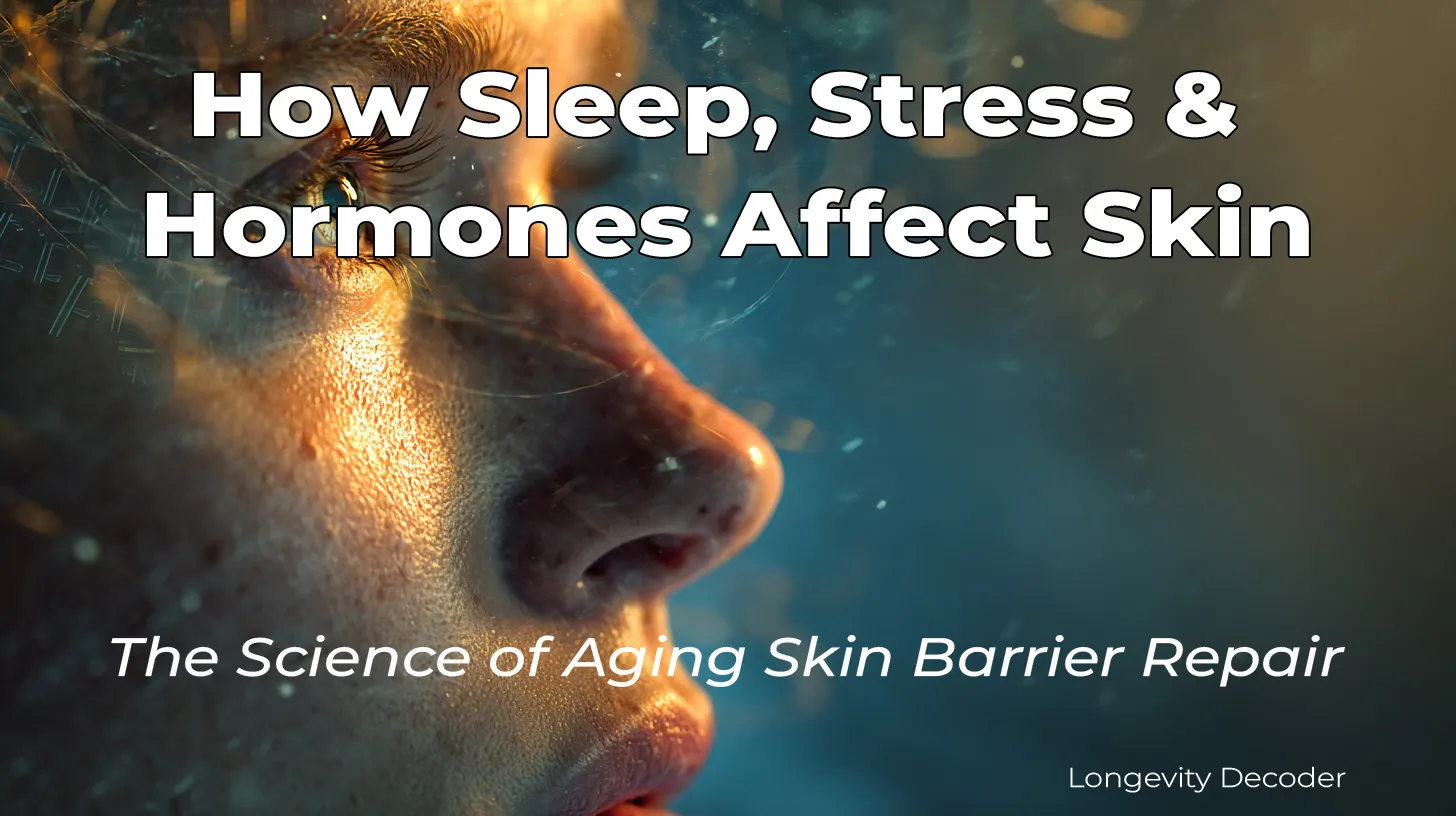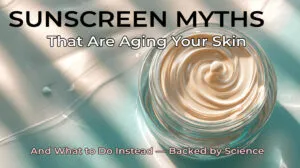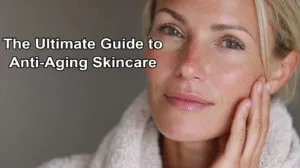Why Your Skin Barrier Matters for Youthful Skin
Skin barrier repair is key to preserving your skin’s youthful appearance and natural resilience. The protective barrier functions as a defense mechanism that helps prevent skin from drying out, environmental toxins, and premature aging, but its strength decreases with age. Your body’s natural renewal process requires both skincare products and proper sleep patterns, stress management, and hormonal equilibrium to achieve an authentic aging skin barrier repair..
The key to aging skin barrier repair goes beyond surface-level creams and serums. Your skin barrier function and renewal abilities depend heavily on your overall health, including sleep quality, stress levels, and hormonal balance. Dermatologists, along with longevity researchers, confirm that lifestyle-based repair methods deliver benefits comparable to those of topical skincare treatments for achieving long-term skin health.
The article examines how sleep patterns, stress levels, and hormonal changes affect skin barrier health, and presents evidence-based methods to enhance skin recovery and maintenance for an extended youthful appearance.
Understanding Aging Skin Barrier Repair
The stratum corneum functions as the skin barrier, which consists of corneocytes that form a dense structure with ceramides, cholesterol, and fatty acids, making up the surrounding lipid matrix. The skin cells function as bricks, and the lipids act as mortar to create a sealed structure.
The aging process causes this protective system to experience progressive deterioration. The body produces fewer lipids as ceramide levels decrease, and skin cells grow more slowly. The skin loses more moisture, which results in dryness and fine lines, and makes it more susceptible to environmental irritants, pollutants, and UV radiation.
The following elements speed up the deterioration of this system:
- Chronic inflammation, known as “inflammaging,” occurs in the body.
- Oxidative stress from UV and pollution
- Hormonal changes occur when estrogen levels decrease.
- Disrupted sleep patterns lead to elevated cortisol levels.
The process of aging skin barrier repair requires two main approaches to restore balance by using ingredients that strengthen the outer skin structure and by supporting internal repair systems, including hormonal control and circadian rhythm function.
Sleep: The Skin’s Overnight Repair Cycle
The body releases growth hormone and performs cellular turnover during deep sleep because these processes help the skin heal. The body produces its highest levels of collagen during nighttime hours, while the skin barrier becomes more permeable to skincare ingredient absorption.
The body maintains elevated cortisol levels during insufficient sleep, which causes skin inflammation, reduces collagen production, and hinders recovery of the skin barrier. Research indicates that people who sleep fewer than six hours per night show elevated TEWL values, which indicate barrier breakdown.
Barrier Repair Tip:
Develop a pre-sleep skincare routine that includes gentle cleansing, followed by applying a night moisturizer or serum containing ceramides and squalane, while keeping your bedroom at a comfortable temperature. The combination of these steps enables your skin to repair itself during sleep, which results in better skin texture and enhanced skin strength in the morning.
Stress: The Cortisol Connection
Stress has two major effects on your skin: it impairs your ability to heal and protect it. Your body produces elevated cortisol levels when you experience ongoing stress, which disrupts the skin barrier’s natural oil and moisture and lipid equilibrium.
The skin barrier becomes weaker because high cortisol levels damage collagen and elastin structures while causing inflammation and slowing down ceramide production, which are essential fats for skin hydration and elasticity. The continuous release of stress hormones through time leads to faster skin aging and reduced skin recovery from environmental damage. TEWL measurements indicate greater moisture loss, confirming impaired barrier function. Your skin becomes unable to maintain itself and develops skin irritations.
Research indicates that people with elevated stress indicators experience longer wound-healing times and lower moisture levels, which can lead to dryness, premature wrinkles, and a duller skin appearance, as well as higher transepidermal water loss (TEWL), both clear signs of compromised barrier function. This means your skin literally loses its ability to retain moisture and defend itself—creating a cycle of dryness, dullness, and premature wrinkles..
Barrier Repair Tip:
To support aging skin barrier repair from within, the practice of stress management through mindfulness, exercise, and supplements of ashwagandha, rhodiola, and holy basil helps decrease cortisol levels in the body. Combining stress management techniques with topical products containing niacinamide and ceramides will help reduce inflammation while strengthening the lipid matrix.
Your skin condition directly relates to your body’s stress hormone levels. Your body’s natural barrier function and skin health will improve when you learn to calm your physical state.
Hormones: Estrogen, Testosterone, and Skin Barrier Repair
Your hormones act like internal messengers that determine how well your skin maintains moisture, elasticity, and overall strength. Your skin barrier experiences damage when your hormones experience changes that occur during perimenopause and menopause, and extended periods of stress.
The Estrogen Effect
Estrogen functions as a hormone that serves as an internal communication system, regulating your skin’s ability to retain moisture and elasticity and maintaining its vital substance, which supports skin health by keeping it hydrated and elastic. The hormone supports collagen production and ceramide synthesis, and helps maintain lipid balance, which helps protect against dryness. The skin becomes thinner and more susceptible to dryness because estrogen levels decrease with age. The aging process of women requires skin barrier repair, because their skin loses its ability to hold moisture due to declining estrogen levels.
Testosterone and Sebum Regulation
Testosterone stimulates sebum production, but excessive or insufficient levels can disrupt your skin barrier. The skin appears dry and lacks moisture when testosterone levels are low, but high testosterone levels result in oily skin and acne breakouts. The skin pH becomes disrupted, and outer layer regeneration slows down when hormonal levels become unbalanced in both men and women.
Supporting Hormonal Balance for Barrier Repair
The recovery of your skin barrier depends on maintaining proper hormone levels. The following steps will help you achieve better hormone balance:
- The skin structure benefits from omega-3 fatty acids, which can be found in fish oil, flax, and chia seeds.
- The phytoestrogens found in soy, flaxseed, and red clover help your skin receive benefits similar to estrogen.
- Your body will maintain proper cortisol and sex hormone levels when you get adequate sleep and practice stress management techniques.
- The combination of ceramides with peptides and niacinamide applied topically works to enhance your skin barrier strength.
Your body will automatically start its natural aging skin barrier repair process when hormones, stress levels, and sleep patterns match each other, which leads to better skin hydration, firmness, and a youthful appearance.
The Skin Barrier Repair Blueprint
Your skin needs more than one magical ingredient to regain its strength, because you must align your skincare routine with your body’s natural healing mechanisms. The skin barrier repair blueprint unites external skincare treatments with body-based modifications to establish enduring restoration of the aging skin barrier at the cellular level.
1. Cleanse Gently
Using harsh surfactants with alcohol-based cleansers should be avoided, as they strip your skin of essential natural oils. Select a pH-balanced non-foaming cleanser that maintains your lipid matrix and microbiome health. The practice of excessive skin cleaning stands as the leading reason that damages aging skin barriers.
2. Replenish Lipids
Your skin barrier needs lipid-rich ingredients —such as ceramides, squalane, cholesterol, and fatty acids —to restore after cleansing. The skin cells (bricks) stay sealed and strong because these compounds function as the “mortar” that holds them together. Your aging skin barrier repair process becomes stronger with regular use, as it reduces moisture loss and skin irritation.
3. Hydrate Deeply
The process of skin repair depends on proper hydration levels. The skin attracts and retains moisture through humectants, which include hyaluronic acid, glycerin, and panthenol. The combination of shea butter or jojoba oil with humectants creates an effective nighttime barrier to maintain skin hydration.
4. Shield Daily
The combination of UV light exposure and environmental pollution leads to deterioration of the skin barrier. Use broad-spectrum SPF 30+ sunscreen daily for indoor and outdoor protection while adding antioxidants like vitamin C, niacinamide, or green tea extract to fight free radicals. The combination of these ingredients protects your skin from daily damage while maintaining its barrier strength.
5. Support from Within
Your body’s internal systems need support to achieve optimal results from topical treatments. The following nutrients should be your focus:
- Your body needs protein and collagen peptides to build structure and support repair.
- Your skin regeneration process depends on magnesium and zinc to activate enzymes.
- Your body needs antioxidant-rich foods, such as berries, leafy greens, and olive oil, to help fight inflammation.
- Your body needs regular sleep and stress management to activate its built-in repair mechanisms.
The combination of these five steps applied daily will establish a protective environment that enables your body to repair aging skin barriers from the inside out.
Lifestyle Habits That Accelerate or Reverse Skin Barrier Aging
Your daily routines either harm or enhance your ability to repair your aging skin barrier. The skin reflects internal body functions through its external appearance, as your diet, physical activity, sleep patterns, and stress management affect its ability to heal and protect itself from environmental damage.
Habits That Accelerate Barrier Aging
Your skin’s defense system will be damaged when you make certain lifestyle choices, despite using an excellent skincare routine.
- The skin becomes sensitive and develops microtears when you over-exfoliate or use harsh actives.
- The regeneration process shortens when you don’t get enough sleep, which also increases cortisol levels.
- The skin becomes dehydrated from alcohol consumption and processed foods, triggering inflammation that damages collagen and ceramide structures.
- Chronic stress: Increases oil oxidation and delays barrier recovery.
Habits That Support Barrier Longevity
Your skin will maintain its strength and elasticity when you consume
- Omega-3s, zinc, and antioxidants function as barrier-building nutrients.
- Hydrating regularly throughout the day helps maintain skin health.
- Regular physical activity enhances blood flow, which delivers essential nutrients to your skin tissue.
- Follow circadian rhythms: Your skin repair process for aging skin will achieve better results when you match your skincare schedule with your natural sleep patterns.
- Limiting sugar and refined carbohydrates, which accelerates glycation, damaging skin proteins and prolonging healing time.
Sync Your Skin with Your Body Clock
Scientific studies demonstrate that skin permeability and repair mechanisms operate differently at different times of day. In the morning, your barrier focuses on defense, protecting against UV and pollutants. At night, it switches into repair mode, boosting cell turnover and collagen synthesis.
Pro Tip:
Regular small actions will produce increasing benefits, enabling your aging skin barrier repair system to operate continuously rather than only responding to damage.
Emerging Research on Skin Barrier Longevity
Current dermatological and longevity research has transformed our understanding of the processes underlying aging skin barrier repair. Scientists now understand that the barrier functions as an active communication system that controls cellular aging, inflammation, and immune system health.
The Barrier as a Longevity Organ
Research indicates that the skin barrier functions as an environmental communication system that extends beyond its physical protective role. The breakdown of the skin barrier leads to body-wide inflammation, which accelerates the aging of biological systems. The process of strengthening the barrier system reduces oxidative stress while preserving homeostasis, which leads to youthful skin appearance.
Next-Generation Ingredients
Multiple bioactive compounds demonstrate their ability to restore long-term skin barrier function and promote skin longevity.
- Niacinamide serves as a compound that stimulates ceramide production while simultaneously enhancing skin elasticity.
- Peptides activate fibroblast cells to produce more collagen, which results in better structural skin repair.
- Postbiotics and microbiome-friendly skincare products enable people to maintain proper skin microbiota balance, which defends against infections and keeps skin hydrated.
- Botanical adaptogens, including Centella asiatica and Panax ginseng extracts, demonstrate their ability to fight inflammation while promoting lipid production.
The Longevity Skincare Model
Research findings indicate that skin youthfulness develops through maintaining a strong barrier system instead of using aggressive resurfacing techniques. The protection and care of the stratum corneum leads to better skin appearance and stronger body resistance, which connects dermatology to longevity science.
Related Reading
The complete guide to anti-aging skincare includes practical strategies for barrier support, available in The Ultimate Guide to Anti-Aging Skincare. The guide provides detailed information about specific ingredients and skincare routines that complement your aging skin barrier repair journey.
Skin Barrier Repair, Reclaiming Youth
Your skin barrier functions as an active defense mechanism, which demonstrates your body’s ability to handle stress and maintain rest and hormonal equilibrium. The breakdown of your skin defense system leads to accelerated aging symptoms. Your skin will achieve better resilience, glow, and firmness when you practice consistent habits, get enough sleep, maintain hormonal equilibrium, and use appropriate topical treatments.
Your skin will achieve enduring brightness through methods that build its strength rather than removing its natural defenses. Your skin barrier repairs itself at the cellular level during nightly deep sleep, through stress-reducing activities, and with appropriate barrier-repairing skincare products.
Over time, accumulation of small daily practices leads to noticeable skin improvements, which include better texture, enhanced elasticity, and improved resistance to environmental and internal stress factors.
Further Reading
The peer-reviewed research studies available to readers provide detailed scientific information on how sleep patterns, stress levels, and hormonal balance affect skin health. These papers form the foundation of today’s evidence-based anti-aging skincare research.
References
Proksch, E., Brandner, J. M., & Jensen, J.-M. (2008). The skin: An indispensable barrier. Experimental Dermatology, 17(12), 1063–1072. https://doi.org/10.1111/j.1600-0625.2008.00786.x
Harding, C. R. (2004). The stratum corneum: Structure and function in health and disease. Dermatologic Therapy, 17(S1), 6–15. https://doi.org/10.1111/j.1396-0296.2004.04S1006.x
Oyetakin-White, P., Suggs, A., Koo, B., Matsui, M. S., Yarosh, D., Cooper, K. D., & Baron, E. D. (2015). Does poor sleep quality affect skin aging? Clinical and Experimental Dermatology, 40(1), 17–22. https://doi.org/10.1111/ced.12455
Chen, Y., & Lyga, J. (2014). Brain–skin connection: Stress, inflammation and skin aging. Inflammation & Allergy–Drug Targets, 13(3), 177–190. https://doi.org/10.2174/1871528113666140522104422
Makrantonaki, E., & Zouboulis, C. C. (2007). The skin as a mirror of the aging process in the human organism – State of the art. Experimental Gerontology, 42(9), 879–886. https://doi.org/10.1016/j.exger.2007.06.007
Ganceviciene, R., Liakou, A. I., Theodoridis, A., Makrantonaki, E., & Zouboulis, C. C. (2012). Skin anti-aging strategies. Dermato-Endocrinology, 4(3), 308–319. https://doi.org/10.4161/derm.22804
Man, M. Q., & Elias, P. M. (2019). Repairing the skin barrier: Approaches and relevance to aging skin. Journal of Clinical and Aesthetic Dermatology, 12(9), 26–33.




